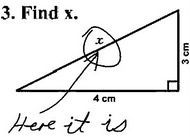Venison for food banks
To Feed the Needy, Iowa Looks Hungrily At Its Glut of Deer
As State Eggs On Hunters, Venison Meatballs Become A Soup Kitchen Staple
By Roger Thurow for the Wall Street Journal, November 20, 2006
With the deer-hunting season going full blast, ground venison is standard fare at soup kitchens and food pantries across Iowa. "Our hamburgers are venison, our spaghetti Bolognese is venison, our meatloaf is venison," says Jean Bergen, director of the House of Compassion, a church converted into a homeless shelter and community kitchen.
Last year, volunteers from Marshalltown churches distributed and cooked more than two tons of ground venison in the kitchen beneath the stained-glass window.
Iowa's Help Us Stop Hunger program targets two troubling trends: rising populations of deer with too much to eat, and hungry people with too little. Through HUSH, which was concocted by the state three years ago to control the exploding deer population, more than 250,000 pounds of venison are expected to be donated by hunters to local food banks. That should result in more than 1 million meals of chili, stew and sloppy Joes.
Last hunting season, Iowa hunters shot more than 210,000 deer and donated 5,608 to food banks. Reports from meat lockers and butcher shops indicate donations are increasing this year.
"You can only eat so much deer," said Kevin Bradley after he dropped off a dead doe for cold storage and processing at the Milo, Iowa, locker south of Des Moines one October Saturday.
Beef is rare at soup kitchens and pantries. "We never get donated hamburger," says Ms. Bergen. So the Food Bank of Iowa in Des Moines collects venison recipes, some of which come from nutrition students at Iowa State University. "One guy made venison stroganoff," says Carey Miller, the food bank's deputy director. "We tasted it. It was very good, so we put it on our list," which is passed along to food pantries and soup kitchens.
Before this year's hunting season, the state's deer population had soared to about 450,000, from only 10,000 in the 1950s, matching a nationwide Bambi boom. Like residents in many other states, Iowa's farmers and suburban gardeners have watched deer ravage their crops. Insurance payouts from deer-vehicle crashes -- as many as 20,000 a year -- have escalated to upward of $50 million in Iowa alone.
At the same time, the number of people in Iowa without enough food was also increasing. In 1999, about 7.6% of households couldn't afford to feed their families at some point during the year. In 2005, it was 10.9%, according to the U.S. Department of Agriculture.
Iowa [wanted to] encourage hunters to thin the growing herds. Most hunters take only one or two deer a year, aiming to get trophy antlers or to fill their freezers. What would they do with extra deer?
The state launched a pilot program in 2003 in which it paid for donated deer to be processed at meat lockers, which butcher meat and provide cold storage. The venison was then handed over to food banks. Because of limited funds, only 1,600 deer were donated that year, and 1,900 the next.
In 2005, the state legislature added a $1 surcharge to every deer license sold. It also allowed hunters to buy multiple permits to kill deer. For Iowa residents, the first permit, usually used to shoot one buck, costs $27. Additional permits cost $12 apiece and are restricted to antler-less deer, usually does. The new surcharges cover the $60 that is paid to meat lockers to process each donated deer. Last year, the number of donated deer tripled as hunters gobbled up extra permits.
"I'm happy to do it," says Ralph Roloff, who owns the locker in State Center, Iowa, that supplies the House of Compassion. He says the $60 pretty much covers his cost of processing a deer and considers any extra expense to be his contribution. He remembers his own family using food stamps when he was growing up.
At the Milo locker, which handled 226 HUSH deer last year, owner Darrell Goering also endorses the program as a taxpayer, noting that it's cheaper for the state to pay for a pound of lean deer meat to feed the hungry than for a pound of similarly lean beef.
Technorati Tags: Food, Deer, Ecology
Labels: recipes



 A few of my daughter
Melina's great posts:
A few of my daughter
Melina's great posts:








2 Comments:
Makes sense to me. Deer meat is no doubt a lot healthier than most beef because no hormones or antibiotics are added to the meat, right? Also, cows use an incredible amount of resources just to live. Livestock waste has caused many problems in terms of polluting water (some e. coli outbreaks have been traced through drinking water supplies), algal bloom and spilling over into wetlands.
Although I am a tree-hugger I do generally support hunting as long as it is done responsibly (no endangered species, etc.) and the meat is eaten. Personally, I prefer wild game, tastes better to me.
Now you're going to laugh...last year here in California some sort of scientific report claimed methane from cow farts was a bigger factor in global warming than the pollution from cars in the area (not sure which area of CA they were talking about, obviously farm land). I can't comment on the subject except that it's pretty funny.
I grew up in a rural community where most guys hunted and many families ate venison, pheasant,groundhog etc. I do not like these meats , but many people in this area stocked their freezers with these wild meats as well as meat from steer , pigs, and chickens that they raised. I remember being a boyfriend teaching me to shoot a rifle as we sat on his front porch , and he always carried a rifle when we went on walks in case he saw a groundhog. At this point in time, I still do not eat wild meat and I've also haven't eaten red meat for a few years. I could easily become a vegetarian. P.S. My dad hunted every year, bur never brought a deer home. One year , he whispered to me, ''I could never shoot a deer.'' ~~~Susanlynn
Post a Comment
<< Home